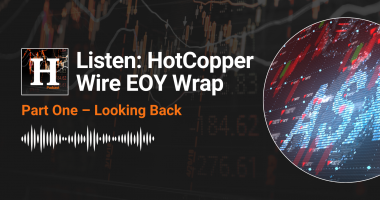Hot on the heels of its prefeasibility study for the Bécancour lithium refinery in Québec – released earlier this week – Lithium Universe Ltd (ASX:LU7) has reached out to shareholders with a series of videos seeking to share some detail about the project’s development and progress.
Explaining a strong financial position
With the PFS already showing that financial dimensions of the refinery project are looking good – with the PFS indicating a pre-tax net present value (NPV) of US$779 milllion, with an internal rate of return (IRR) of 23.5% and payback of 3.5 years – CFO John Sobolewski explained how LU7 had come to these figures.
He said that his previous experience as CFO in charge of Galaxy Resources’ Jiangsu lithium refinery in China had given him plenty of scope to assess how a similar project could be undertaken in Canada.
This was aided by the fact that plant designer Hatch was a key actor in construction of both projects.
“We’ve worked with Hatch throughout this process and we’ve worked with the same supplier and procurement strategy. We’ve done this to replicate the success we had at Jiangsu,” he said.
“By doing this, we’re utilising proven designs, reducing engineering work – in many cases, we’re able to get quotes from the actual suppliers as opposed to the budgeting exercise.
“So it gives us some confidence that the numbers we’re using – particularly for the Capex and Opex – are real numbers.”
Getting price guidance right
Managing director Alex Hanly featured in two videos in the series – one introducing the PFS, and one helping investors to understand how LU7 had approached the question of lithium pricing as a factor in the project.
This is particularly important given the questionable fortunes of lithium, which is now trading at 75,500 Chinese yuan per tonne (CNY/t), after dipping to 72,500 CNY/t in September (its lowest point in over three years).
He said that to get a comprehensive overview, LU7 consulted multiple sources to understand how pricing was situated for both the feedstock of spodumene (SC6) and the resulting material produced by the plant, lithium carbonate.
“What we’ve done is use ten different sources – eight of which were from technical studies up to feasibility study – to get an understanding of the average, both across SC6 and lithium carbonate,” he said.
From this information, the company then had to develop a ‘pricing ratio’.
“The pricing ratio itself is – put very simply – the price at which we buy spodumene into the merchant refinery and the price at which we sell the lithium carbonate to the offtaker,” Mr Hanly said.
“And what we found through our different evaluations of these different projects was that some of these projects took an overly optimistic view, some 22 times the spodumene price, and some upwards of 26 times.
“Now, this is obviously a pricing ratio which would never exist in the real environment.
“So what we’ve done – in doing our analysis – is take a ratio which we believe is quite conservative, a ratio of under 18 times, which is considered to be the median across the long-term average.”
From this, LU7 was able to identify a ‘goldilocks zone’, which was “a range of this pricing ratio between inputs and outputs at which the merchant refinery can be exceptionally viable,” according to Mr Hanly.
LU7 has been trading at 1.5 cents.









